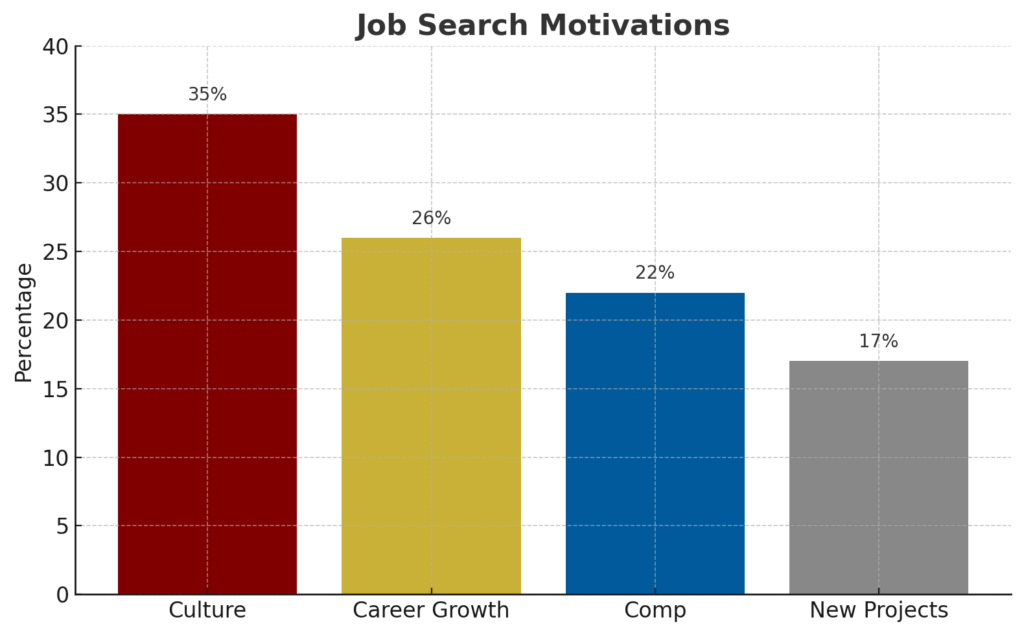If you’re looking for stable, well-paying work in the Minneapolis-St. Paul metro area, light industrial and manufacturing jobs might be exactly what you need. With over 320,000 Minnesotans working in manufacturing—making it the state’s second-largest employing industry—these aren’t just temporary gigs. They’re real careers with solid paychecks and actual advancement opportunities.
At Midwest Staffing, we’ve been connecting talented workers with great manufacturing and light industrial opportunities across the Twin Cities since 1990. We know this market inside and out, and we’re seeing some exciting changes happening right now. Let’s talk about what’s really going on in Minnesota’s light industrial sector and what it means for your career in 2026.
Why Minnesota Manufacturing Matters Right Now
Here’s something you might not know: Minnesota manufacturing workers earn an average of $83,280 annually—that’s about $9,000 more than the state’s overall average wage. And the industry isn’t slowing down. Minnesota is expecting more than 93,000 job openings for manufacturing production positions through 2032.
Translation? If you’re reliable, willing to learn, and ready to work, there are opportunities waiting for you right here in the Twin Cities metro.
What’s Changing in Minnesota Light Industrial Jobs
Wages Are Finally Going Up
Let’s talk money. Manufacturing workers in Minnesota are seeing better pay than they have in years. Companies across Brooklyn Park, Shakopee, Eagan, and throughout the metro are competing for good workers, and that means higher starting wages, better benefits, and signing bonuses becoming more common.
Many entry-level light industrial positions now start at $16-18 per hour, with experienced workers in specialized roles earning $25-35+ per hour. Add in shift differentials for nights and weekends, and you can build a pretty solid income.
Skills Matter More Than Diplomas
Here’s some genuinely good news: 81% of companies nationwide (and Minnesota manufacturers are no exception) now hire based on what you can actually do rather than what degrees you have. Can you operate equipment safely? Handle basic quality checks? Work with inventory management systems? Show up on time and work as part of a team? That’s what matters.
Many Minnesota manufacturing jobs can be started with just a high school diploma or GED, and companies provide on-the-job training. Your work ethic and willingness to learn count more than ever before.
Technology is Part of the Job (But You Can Learn It)
Here’s the reality: about 50% of manufacturers are integrating AI and automation into their operations. But before you panic—81% of manufacturing work still needs human hands and human brains. Technology isn’t replacing workers; it’s changing what they do.
Today’s warehouse and production workers use scanners, tablets, and computer systems to track inventory, monitor quality, and keep operations running smoothly. If you can use a smartphone, you can learn these systems. Most employers provide training, and honestly, it makes the work easier and safer.
Flexibility Is Becoming Standard
Need to work second shift? Prefer weekends? Looking for overnight work? Minnesota manufacturers are offering more shift options than ever, often with premium pay for less traditional hours. Companies have figured out that flexibility helps them attract and keep good workers—and that benefits everyone.

Types of Light Industrial Jobs in the Twin Cities
The Minneapolis-St. Paul metro offers diverse opportunities:
Warehouse and Distribution: Order pickers, forklift operators, shipping/receiving clerks, and material handlers. Pay: $16-25+ per hour
Manufacturing and Production: Machine operators, assembly workers, quality control inspectors, and production technicians. Pay: $18-35+ per hour
Maintenance and Skilled Trades: Industrial maintenance techs, electrical/mechanical helpers, and equipment operators. Pay: $22-40+ per hour
What Employers Are Really Looking For
After placing thousands of workers in light industrial positions across the Twin Cities, we know what makes someone successful in these roles:
Reliability Above All: Show up on time, every time. This is the #1 thing employers care about. Minnesota manufacturing runs on schedules, and being dependable makes you invaluable.
Safety Mindset: Manufacturing environments have real hazards. Following safety protocols, wearing required PPE, and watching out for your coworkers isn’t just good practice—it’s mandatory.
Willingness to Learn: Whether it’s a new machine, a different process, or updated software, being open to training and new skills sets you apart.
Team Player Attitude: Most light industrial work happens in teams. Being someone others want to work with matters just as much as your technical skills.
Basic Computer Literacy: You don’t need to be a tech expert, but being comfortable with basic computer systems, handheld scanners, and digital processes is increasingly important.
Why Temporary Staffing Makes Sense in Minnesota
For Job Seekers:
- Get your foot in the door with temp-to-hire opportunities
- Try different companies before committing long-term
- Start earning immediately—we can place you within days
- We handle paperwork, background checks, and coordination
- Get expert guidance on which companies and roles fit you best
The Reality: Many temporary placements turn permanent. Companies like evaluating workers before permanent offers, and workers like testing workplace culture first.
The Minnesota Advantage: Why Work Here
Strong Labor Market: Low unemployment means workers have leverage and good companies compete for talent.
Career Pathways: Clear advancement routes from operator to lead to supervisor positions exist across the industry.
Diverse Industries: Medical devices, food production, and advanced manufacturing offer variety in what you can do.
Stable Economy: Minnesota’s diverse economy means more stable manufacturing jobs than single-industry states.
Getting Started: Your Next Steps
Ready to explore light industrial opportunities in the Twin Cities? Here’s how to move forward:
1. Apply with Midwest Staffing
Our application process is straightforward—no fancy resume needed. We want to know your work history, what skills you have, what schedule works for you, and what kind of work interests you.
2. Talk with Our Team
We’ll have a real conversation about your experience, what you’re looking for, and what opportunities might be a good fit. We work with companies across Saint Paul, Brooklyn Park, Shakopee, Eagan, Elk River, and Vadnais Heights, so we likely have options near you.
3. Get Placed Quickly
Once we find the right match, we can often get you started within days. We handle all the coordination with the employer—you just show up ready to work.
4. Build Your Career
Whether you stay temporary for flexibility or transition to permanent employment, we’re here to support your career growth. Need training? Want to move into a different role? Looking for advancement? We’re in your corner.
What Makes Midwest Staffing Different
We’re Local: Serving the Minneapolis-St. Paul metro since 1990—we know these companies and this market.
We’re Honest: We’ll tell you what a job actually entails and what to expect. No surprises.
We’re Connected: Eight locations across the metro mean hundreds of employer relationships and more opportunities for you.
The Bottom Line
Manufacturing and light industrial work in Minnesota offers something increasingly rare these days: stable jobs with decent pay that don’t require years of college or mountains of debt. With 93,000+ openings expected through 2032 and average wages around $83,000, these aren’t dead-end positions—they’re legitimate career paths.
The work isn’t always glamorous. It can be physical, it can be repetitive, and you’ll probably get tired. But it’s honest work that pays the bills, offers advancement opportunities, and provides the stability that families need.
At Midwest Staffing, we’ve helped thousands of Minnesotans find their place in the light industrial sector. Whether you’re just starting out, looking for a career change, or simply need reliable work that respects your time and pays fairly, we’re here to help.
FAQ’s
The “best” depends on your skills and interests, but some of the highest-paying and most in-demand roles include CNC machinists, industrial maintenance technicians, quality control inspectors, and forklift operators. Medical device manufacturing and food production are particularly strong in Minnesota, offering stable employment and good wages. Machine operators and production supervisors are also consistently in demand across the Twin Cities metro.
Entry-level light industrial positions in Minnesota typically start at $16-18 per hour. Experienced workers in specialized roles earn $25-35+ per hour. According to state data, manufacturing workers in Minnesota average $83,280 annually—about $9,000 higher than the state’s overall average wage. Pay varies based on experience, skills, shift timing, and location within the metro area.
Not necessarily. Many Minnesota manufacturers hire entry-level workers and provide on-the-job training. Companies are increasingly using skills-based hiring, meaning they care more about your ability to learn, show up reliably, and work safely than about previous manufacturing experience. A high school diploma or GED is typically required, along with basic computer literacy and a good safety record.
Temporary positions are for a specific duration or project—you know from the start it’s temporary work. Temp-to-hire positions are designed as extended interviews: you work temporarily (usually 3-6 months) with the possibility of being hired permanently if it’s a good fit for both you and the employer. Many Minnesota manufacturers prefer temp-to-hire because it lets them evaluate workers before making permanent offers.
Yes. The Minneapolis-St. Paul metro is a major distribution hub, and warehouses across Shakopee, Eagan, Brooklyn Park, and surrounding areas consistently hire throughout the year. Demand typically spikes before holidays and peak shipping seasons, but there are openings year-round. Midwest Staffing works with dozens of warehouses and distribution centers across the metro.
Most light industrial positions offer multiple shift options: first shift (typically 6am-2:30pm or 7am-3:30pm), second shift (2pm-10:30pm or 3pm-11:30pm), and third shift (10pm-6:30am or 11pm-7:30am). Many facilities also offer weekend shifts and 12-hour shifts with rotating schedules. Second and third shifts often include shift differentials of $1-3 more per hour.
If you’re qualified and available, we can often place you within a few days. The timeline depends on completing your application, having an interview with our team, background check processing (usually 24-48 hours), and finding the right match. Some workers start their first assignment within a week of initial contact.
We serve the entire Minneapolis-St. Paul metro area with convenient locations in Saint Paul, Brooklyn Park, Shakopee, Eagan, Elk River, and Vadnais Heights, plus our corporate office in Eagan. We’ve recently expanded to Fargo, North Dakota as well. We place workers in positions throughout the metro and surrounding areas.
Benefits vary by assignment, but many temporary workers through Midwest Staffing are eligible for benefits after meeting eligibility requirements. This can include health insurance options and holiday pay. Permanent placements through temp-to-hire arrangements receive full benefits from the employer once hired permanently. Specific benefits depend on the client company and assignment duration.
When proper safety protocols are followed, yes. Minnesota manufacturers take workplace safety seriously, providing required training, personal protective equipment (PPE), and clear safety procedures. Most injuries occur when safety rules aren’t followed, which is why companies emphasize safety so heavily. You’ll receive safety training before starting any position, and ongoing safety reinforcement is standard across the industry.
Ready to start your light industrial career in Minnesota? Apply now or call us at (651) 641-0442 to talk with our team. We’ve got opportunities waiting across the Twin Cities metro, and we’re ready to help you find the right fit.
For employers looking to build your team, contact us to discuss how Midwest Staffing can solve your manufacturing and warehouse staffing challenges. We’ve been a trusted partner for Minnesota companies since 1990—let’s talk about how we can support your success in 2026 and beyond.











